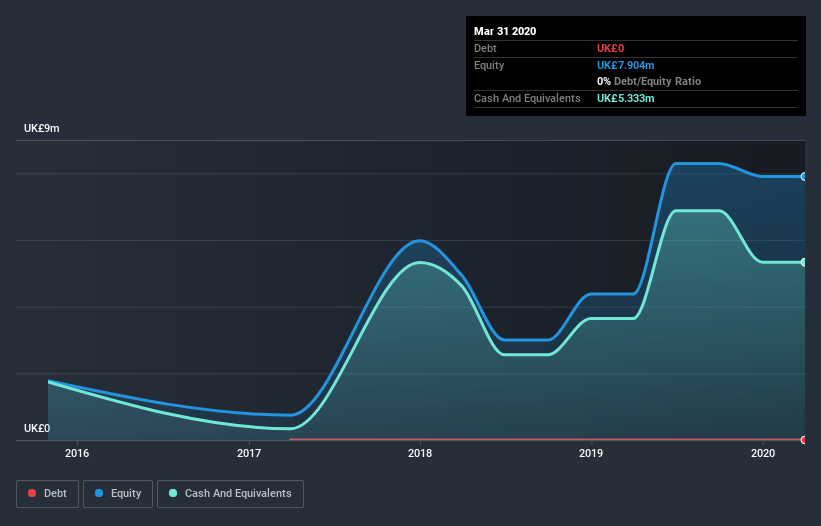We're Keeping An Eye On Sosandar's (LON:SOS) Cash Burn Rate

Even when a business is losing money, it's possible for shareholders to make money if they buy a good business at the right price. For example, although software-as-a-service business Salesforce.com lost money for years while it grew recurring revenue, if you held shares since 2005, you'd have done very well indeed. But the harsh reality is that very many loss making companies burn through all their cash and go bankrupt.
Given this risk, we thought we'd take a look at whether Sosandar (LON:SOS) shareholders should be worried about its cash burn. In this report, we will consider the company's annual negative free cash flow, henceforth referring to it as the 'cash burn'. We'll start by comparing its cash burn with its cash reserves in order to calculate its cash runway.
Check out our latest analysis for Sosandar
How Long Is Sosandar's Cash Runway?
A company's cash runway is calculated by dividing its cash hoard by its cash burn. When Sosandar last reported its balance sheet in March 2020, it had zero debt and cash worth UK£5.3m. Looking at the last year, the company burnt through UK£9.2m. Therefore, from March 2020 it had roughly 7 months of cash runway. Importantly, the one analyst we see covering the stock thinks that Sosandar will reach cashflow breakeven in 2 years. Essentially, that means the company will either reduce its cash burn, or else require more cash. The image below shows how its cash balance has been changing over the last few years.
How Well Is Sosandar Growing?
Notably, Sosandar actually ramped up its cash burn very hard and fast in the last year, by 136%, signifying heavy investment in the business. Of course, the truly verdant revenue growth of 103% in that time may well justify the growth spend. On balance, we'd say the company is improving over time. Of course, we've only taken a quick look at the stock's growth metrics, here. This graph of historic revenue growth shows how Sosandar is building its business over time.
How Hard Would It Be For Sosandar To Raise More Cash For Growth?
Since Sosandar has been boosting its cash burn, the market will likely be considering how it can raise more cash if need be. Issuing new shares, or taking on debt, are the most common ways for a listed company to raise more money for its business. Many companies end up issuing new shares to fund future growth. We can compare a company's cash burn to its market capitalisation to get a sense for how many new shares a company would have to issue to fund one year's operations.
Sosandar's cash burn of UK£9.2m is about 30% of its UK£31m market capitalisation. That's not insignificant, and if the company had to sell enough shares to fund another year's growth at the current share price, you'd likely witness fairly costly dilution.
Is Sosandar's Cash Burn A Worry?
Even though its increasing cash burn makes us a little nervous, we are compelled to mention that we thought Sosandar's revenue growth was relatively promising. Shareholders can take heart from the fact that at least one analyst is forecasting it will reach breakeven. Even though we don't think it has a problem with its cash burn, the analysis we've done in this article does suggest that shareholders should give some careful thought to the potential cost of raising more money in the future. Taking a deeper dive, we've spotted 5 warning signs for Sosandar you should be aware of, and 1 of them is potentially serious.
If you would prefer to check out another company with better fundamentals, then do not miss this free list of interesting companies, that have HIGH return on equity and low debt or this list of stocks which are all forecast to grow.
This article by Simply Wall St is general in nature. It does not constitute a recommendation to buy or sell any stock, and does not take account of your objectives, or your financial situation. We aim to bring you long-term focused analysis driven by fundamental data. Note that our analysis may not factor in the latest price-sensitive company announcements or qualitative material. Simply Wall St has no position in any stocks mentioned.
Have feedback on this article? Concerned about the content? Get in touch with us directly. Alternatively, email editorial-team@simplywallst.com.

